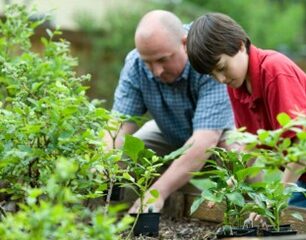
Dr. Dennis Johnson of Decatur has worked as a veterinarian and small animal surgeon for over 50 years. In the following article, Dr. Dennis Johnson discusses the surgical options for families treating cancer in pets – and how to extend the life, and happiness of an ailing furry friend.
When a pet gets cancer, the sadness of the event can begin to make all treatment options look overwhelming by nature. However, there are many benefits to the surgical means of moving forward for pets and their owners alike.
There are a variety of ways surgery in pets with cancer can be used to manage solid tumors, to diagnose the cancer itself, to make chemotherapy more effective, or to improve the quality of the pet’s life. Different types of beneficial surgery include cytoreductive procedures, curative-intent surgery, and palliative surgical care.
In this article, Dr. Dennis Johnson, Veterinarian reviews the three main types of surgical options for treating cancer in pets. We will also cover how and why surgery may benefit not only the animal, but the pet owner, as well. By the conclusion, it should be clear that surgery is a highly beneficial option for improving the life of the animal with cancer as well as their owner. Let’s get started.
Common Surgical Procedures
Dr. Dennis Johnson, Veterinarian says that surgery is a word with scary connotations to it, even for adults who own pets. However, the truth is that surgery is a very effective medical treatment for more than one reason, especially when it comes to cancer. Some of these reasons include:
- Aiding in Chemotherapy – Sometimes removing an entire tumor or cancerous mass is not necessary, but removing part of it can limit the number of dangerous cells that chemotherapy targets, essentially making that treatment’s role easier.
- Diagnosing Cancer – When a dog or cat has a lump that should not be there, the best way to tell if it is cancer is sometimes by simply surgically removing part of it testing the lump for cancerous proof. This is called “biopsy.”
- Curing – Sometimes, Dr. Dennis Johnson of Decatur explains that all it takes is removing the lump or tumor in its entirety through surgery to cure the pet of cancer, in effect.
- Improve Life Quality – Even if nothing can be done to extend the life of a pet with cancer, sometimes surgery can simply make that pet as comfortable as possible in the lifetime they have remaining.
Dr. Dennis Johnson of Decatur says that with these reasons for surgery abundantly clear, we can move on to discussing the three main surgical options for treating cancer in pets.
Curative Intent Surgery
Curative intent surgery is designed to get rid of the whole tumor in an animal patient and hopefully cure the patient of any negative symptoms or consequences of that tumor.
This provides an animal with an immediate cure, when successful. It has no danger of causing issues through radioactive treatment and, in a similar vein, no chemical side-effects!
Dr. Dennis Johnson of Decatur also explains that it has the added benefit of giving no negative side-effects to the animal’s immune system’s response time and is very effective when it comes to large masses that other types of treatment may not be enough for.
Palliative Surgery
Palliative surgery is not an effective option if the goal is to cure the patient, but it has been known to be effective for improving the patient’s life experience. An animal with cancer may be uncomfortable, unable to move freely or even get comfortable when lying down at times with a cancerous mass. Other symptoms may include sickness or lethargy.
Palliative surgery, according to Dr. Dennis Johnson of Decatur, while not guaranteeing that the animal will live any longer than it may have without the surgical process, can relieve these uncomfortable symptoms. This leaves the pet with an improved quality of life, even factoring in recovery time from the surgery itself.
 Cytoreductive Surgery
Cytoreductive Surgery
Dr. Dennis Johnson, Veterinarian explains that cytoreductive surgery consists of effectively removing any visible manifestation of a cancerous lump. It does not, however, remove all of the cancerous cells in the animal’s body. By getting rid of the large mass through this surgery, the animal’s ability to recover from cancer through other treatments like chemotherapy or radiotherapy are amplified.
Though cytoreductive surgery does not cure an animal, it does provide hope for a better outlook for the patient. It can even extend the life of the animal.
In Conclusion
Dr. Dennis Johnson, Veterinarian sums up the surgical options for treating cancer in pets are either palliative, cytoreductive, or curative. Palliative surgery can make the animal comfortable for the time that remains, while cytoreductive procedures can extend the animal’s life, minimize symptoms, and make a cure more possible.
Curative surgery, on the other hand, is sometimes the only operation needed to fully cure a pet from cancer. Though surgery sometimes comes with negative connotations and can be overwhelming to consider, it is important to understand just how high the chances are that it will benefit the animal and the pet owner.


